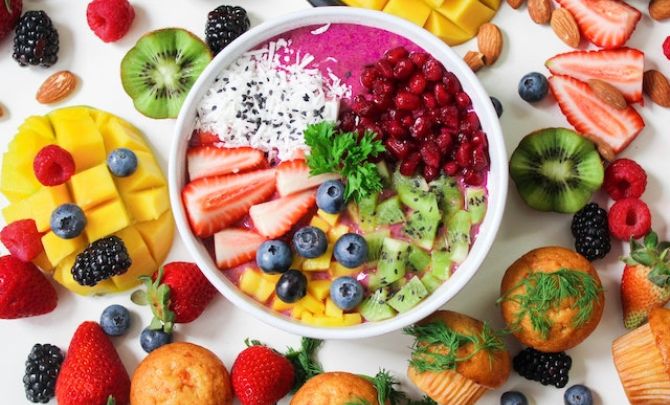Chemically speaking, food is a collection of proteins, fats, and carbs that the body breaks down into glucose and amino acids. Glucose is used as energy fuel and amino acids are used to build our bodies the same way safe bets on 20Bet are used to build our financial freedom. A healthy diet isn’t just a slim body; it’s a healthy attitude toward yourself. To be healthy, it’s important to follow only three principles.
Timeliness
The basics of healthy eating means there is no sense of hunger, so meals should be 3-4 times.
Hunger and satiety are regulated by the leptin-ghrelin system, which works differently in everyone. This system is responsible, among other things, for the speed of the feeling of satiety, forms the eating behavior. There are people whose “I’m full” signal comes with some delay, which provokes overeating. It’s recommended that such people eat 5-6 meals a day.
Variety
A healthy proper diet is a balanced diet, and it cannot be monotonous. Sound nutrition implies a sufficient amount of essential components for the body: vitamins, trace elements, amino acids, fiber, omega acids, and this is only possible with a varied diet.
Healthy eating should take into account individual taste preferences. It’s important that your favorite foods must be present in your diet, and it’s unnecessary to choke on steamed vegetables every day if you dislike their taste.
Adequacy
A healthy diet should meet your body’s energy needs, which means it depends on your age, gender, weight, and physical activity. Thus the individual program of healthy nutrition also takes into account peculiarities of metabolism: if metabolism is high (in children, pregnant women, recovering after a serious illness), then the daily caloric intake should be higher, if metabolism is reduced (in some diseases and elderly people), then the caloric intake should be slightly lower than the norm accepted for this age group.
Nutritional Peculiarities of Men, Women, and Children
In the absence of regular physical and mental exertion, the daily energy value of the diet for middle-aged people is about 2000 kcal, for the elderly – 1600-1700 kcal, and with obesity – 1700-1900.
In children the daily requirement for energy is much higher due to the high rate of metabolic processes. The daily caloric intake varies depending on age and is 1500-3000 kcal.
A healthy child’s diet should always include different types of foods with a sufficient amount of animal protein, because this protein is a source of heme iron, which is essential for the growing body. Just like an adult, a child needs daily consumption of fruit and dairy products.
Healthy Foods
The Green List
Previously, a food pyramid was adopted as the basis of a healthy diet, in which cereals and grains were the mainstay. But few people know that such a scheme was developed by the Ministry of Agriculture, not the Ministry of Health. In recent years, nutritionists have been inclined to believe that vegetables should form the basis of a healthy diet.
These are basic healthy foods that are rich in protein, essential omega acids, and B vitamins.
Ideal choice for those who lose weight: while high in protein, this category of products is low in calories.
An undeservedly demonized product. Previously, it was thought that a healthy diet meant eating eggs no more than 1-2 times a week, but recent nutritional studies allow for 1-2 eggs a day.
The Red List
Those who live in warm climates year-round can completely avoid eating animal fats and fatty meats. Northern residents, on the contrary, should increase the amount of fat in their diet (by no more than 15%), because animal fats are important for the proper functioning of the immune system.
According to WHO recommendations, sugar should not account for more than 4% of daily calories, in a diet of 2000 kcal it is 20 grams of sugar per day (1 marshmallow or 1 spoon of jam).
There are studies of South American Indians whose diets are completely free of salt. It’s worth noting that this population has an extremely low mortality rate from heart disease.
